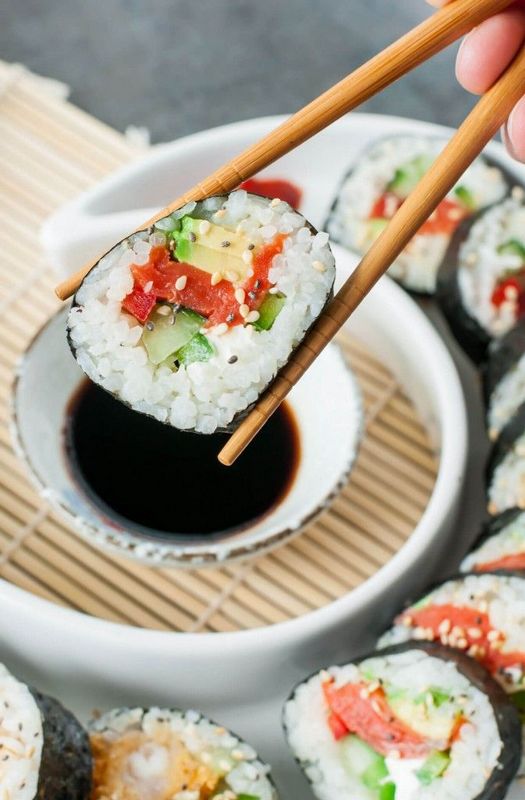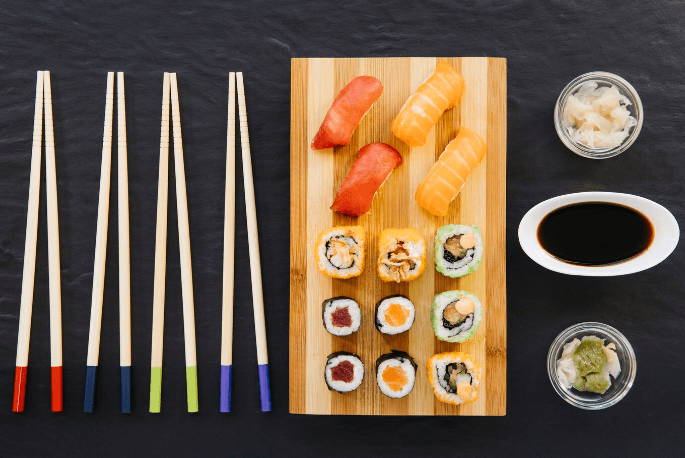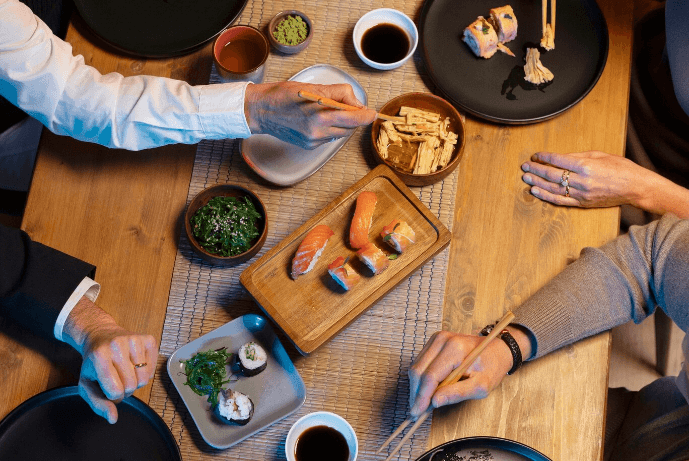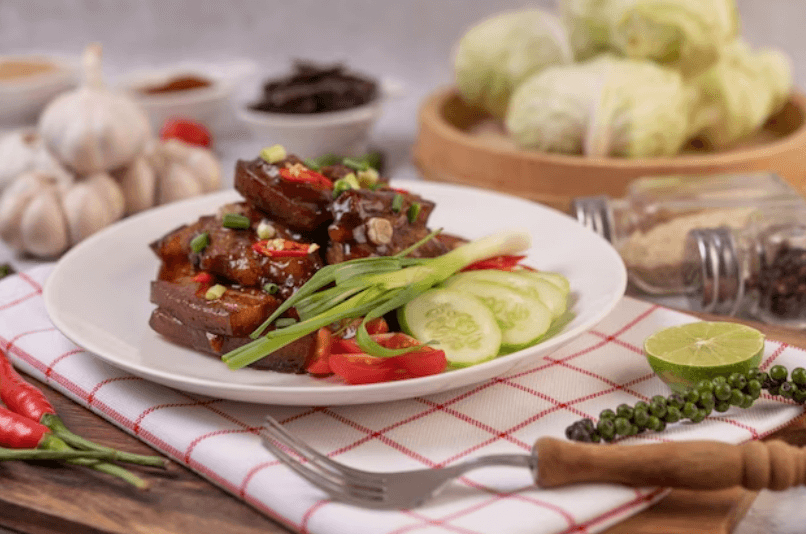Homemade Sushi: Tips for Freshness and Safety.
When it comes to enjoying sushi, freshness and safety are of utmost importance. Making sushi at home can be a fun and rewarding experience, but it is essential to follow certain tips to ensure that your homemade sushi is both fresh and safe to eat.
1. Choose fresh ingredients: The key to delicious sushi is using fresh ingredients. When buying seafood, make sure it smells fresh and has bright, clear eyes. For vegetables, opt for organic and locally sourced produce for the best flavor.
2. Proper storage: Sushi ingredients, especially raw fish, must be stored correctly to maintain freshness and avoid spoilage. Store seafood in the refrigerator at a temperature below 40°F (4°C) and consume within 1-2 days. Keep vegetables and rice in a cool, dry place.
3. Cook rice properly: Rice is a crucial component of sushi, and it must be cooked perfectly. Use short-grain rice and follow the instructions on the package. Once cooked, spread the rice in a shallow dish to cool and season it with sushi vinegar. This step ensures the right texture and flavor for your sushi.
4. Practice good hygiene: Keeping your hands, utensils, and workspace clean is vital for food safety. Wash your hands thoroughly before handling any food, and make sure all utensils and surfaces are clean and sanitized. This helps prevent the spread of bacteria and ensures your homemade sushi is safe to eat.
5. Enjoy your sushi immediately: Sushi tastes best when eaten right away. The longer it sits, the higher the risk of bacterial growth and loss of freshness. Avoid making large batches of sushi that will be stored for long periods and instead enjoy your homemade creation immediately for the best taste and safety.
By following these tips for freshness and safety, you can confidently enjoy homemade sushi that rivals that of your favorite sushi restaurant. So, put on your apron, get ready to roll, and enjoy the deliciousness of fresh, homemade sushi!
The Basics of Homemade Sushi
When making homemade sushi, it is important to prioritize freshness and safety. Follow these tips to ensure a delicious and enjoyable sushi experience:
1. Choose fresh ingredients: Selecting high-quality fish and vegetables is crucial for the taste and safety of your sushi. Make sure the fish is fresh and has been properly stored to avoid any potential health risks.
2. Handle raw fish with care: Raw fish can be a breeding ground for bacteria, so it is important to handle it properly. Keep all raw fish refrigerated until ready to use and make sure to clean all utensils and surfaces that come into contact with the fish.
3. Cook rice correctly: Rice is a key component of sushi, so it is essential to cook it properly. Use sushi rice or short-grain rice that becomes sticky when cooked. Rinse the rice thoroughly before cooking and follow the instructions for the correct water-to-rice ratio to achieve the right texture.
4. Use clean and sharp knives: When cutting sushi rolls, it is important to use clean and sharp knives to ensure precision and prevent the ingredients from getting squashed. Dull knives can also be dangerous as they require more force to cut through the ingredients.
5. Practice good hygiene: Wash your hands thoroughly before handling any food, especially when working with raw fish. It is also important to keep your work area clean and sanitized to minimize the risk of cross-contamination.
6. Follow proper storage guidelines: If you have leftovers, make sure to store them correctly to maintain freshness and prevent spoilage. Keep sushi refrigerated and consume within 24 hours to ensure maximum flavor and safety.
By following these tips, you can create homemade sushi that is both delicious and safe to enjoy. Experiment with different flavors and fillings to create your own unique sushi creations!
Choosing Fresh Ingredients
When making homemade sushi, it’s important to select fresh ingredients to ensure both the taste and safety of your meal. Here are some tips for choosing the freshest ingredients:
| Tips for Freshness |
| 1. Look for vibrant and bright-colored vegetables. Avoid any vegetables that appear limp or have brown spots. |
| 2. Choose seafood that has a mild, fresh smell. Avoid seafood with a strong fishy odor. |
| 3. Check the expiration date on packaged ingredients such as nori (seaweed) and rice vinegar. Use ingredients that are within their expiration date. |
| 4. Purchase sushi-grade fish from a reputable market. This ensures that the fish has been properly handled and is safe to eat raw. |
By following these tips, you can ensure that your homemade sushi is both fresh and safe to eat.
Proper Preparation Techniques
To ensure the safety and freshness of your homemade sushi, it is essential to follow proper preparation techniques. Here are some helpful tips:
- Cleanliness is key. Wash your hands thoroughly with soap and warm water before handling any ingredients.
- Use fresh and high-quality ingredients. Make sure to buy fresh fish from a reputable source and check for any signs of spoilage. Additionally, use fresh vegetables and other toppings.
- Properly cook the rice. It’s important to wash the rice thoroughly before cooking, and then cook it according to the instructions on the package. This will ensure that the rice is cooked evenly and is free from any harmful bacteria.
- Handle raw fish with care. If you’re using raw fish for your sushi, make sure to handle it properly to prevent cross-contamination. Use separate cutting boards, knives, and utensils for raw fish and other ingredients.
- Keep your workspace clean. Clean and sanitize all surfaces, utensils, and equipment before and after use to prevent any bacteria buildup.
- Practice proper food handling. Minimize the time your ingredients spend at room temperature and store them in the refrigerator when not in use. Avoid leaving sushi out at room temperature for extended periods.
- Use safe handling techniques. When rolling sushi, make sure to wet your hands with water or vinegar to prevent the rice from sticking. This will also help keep your rolls neat and tidy.
- Store leftovers properly. If you have any leftover sushi, store it in an airtight container in the refrigerator. Consume it within 24 hours to ensure its freshness and safety.
By following these proper preparation techniques, you can enjoy homemade sushi that is both delicious and safe to eat.
Knife Skills for Sushi Making
When it comes to making sushi, having the right knife skills is essential for both safety and ensuring the freshness of your ingredients. Here are some tips to keep in mind:
1. Use a sharp knife: A dull knife can easily slip and cause accidents. Make sure your knife is sharp and well-maintained to ensure clean cuts.
2. Choose the right knife: There are different types of knives used in sushi making, such as Yanagiba (sashimi knife), Usuba (vegetable knife), and Deba (fish filleting knife). Each knife has its specific purpose, so make sure you choose the right one for the task.
3. Hold the knife properly: Grip the handle firmly, with your thumb and index finger on either side of the blade. This will give you better control and stability when cutting.
4. Practice proper cutting techniques: For sushi, it is important to have uniform and clean cuts. Slice through the ingredients in one smooth motion, applying even pressure. For fish, slice against the grain to ensure tenderness.
5. Maintain cleanliness: Keep your knife clean and sanitized throughout the sushi-making process. This will prevent cross-contamination and ensure the freshness and safety of your sushi.
By mastering these knife skills, you’ll be well on your way to creating delicious and visually-appealing sushi at home.
Safety TipFreshness Tip
| Always keep your fingers away from the blade when cutting. | Use fresh, high-quality ingredients to enhance the flavor of your sushi. |
| Store your knives safely to avoid accidents. | Buy seafood from reputable sources and use it within a day for the best taste. |
| Take your time and focus when handling sharp knives. | Keep your ingredients chilled to maintain their freshness. |
Food Safety and Sushi
When it comes to sushi, ensuring its freshness and safety is of utmost importance. Here are some tips to keep in mind:
- Always purchase sushi-grade fish from reputable sources to minimize the risk of foodborne illnesses.
- Store sushi-grade fish at the right temperature, usually below 40°F (4°C), to prevent bacterial growth.
- If you’re making homemade sushi, make sure to use fresh ingredients and handle them with clean hands and utensils.
- Clean all surfaces and utensils thoroughly before preparing sushi to avoid cross-contamination.
- Use separate cutting boards for different ingredients, especially raw fish and vegetables, to prevent any bacteria transfer.
- Keep sushi refrigerated until ready to serve, and if leftovers are stored, consume them within 24 hours.
- Discard any sushi that has been left at room temperature for more than 2 hours to prevent bacterial growth.
- Ensure that the sushi rice is cooked and seasoned properly to avoid any food safety risks.
- When dipping sushi into soy sauce, use small individual dishes to prevent any contamination.
By following these food safety tips, you can enjoy sushi while minimizing any risks and ensuring its freshness.

Storing Homemade Sushi
Tips for Safety and Freshness
Once you have successfully made your homemade sushi, it is important to store it properly to maintain its freshness and ensure its safety.
Here are some tips for storing homemade sushi:
1. Refrigerate promptly: After making your sushi, refrigerate it immediately to prevent bacterial growth. Sushi should be stored at a temperature below 40°F (4°C) to maintain freshness and prevent foodborne illnesses.
2. Use airtight containers: Store your homemade sushi in airtight containers to prevent exposure to air and moisture. This will help to preserve its taste and texture.
3. Separate different types: If you have made different types of sushi, store them separately to prevent cross-contamination and preserve their individual flavors.
4. Consume within 24 hours: Homemade sushi is best enjoyed fresh. It is recommended to consume it within 24 hours to ensure its quality and taste. After this time, the sushi may become less appetizing.
5. Check for freshness: Before consuming stored homemade sushi, check for any signs of spoilage, such as a sour smell, slimy texture, or unusual color. If you notice any of these signs, discard the sushi immediately.
By following these tips, you can store your homemade sushi safely and keep it fresh for the best culinary experience.
Sushi Rice Perfection
When making homemade sushi, the key to creating a delicious sushi roll lies in the perfection of the sushi rice. Sushi rice is the foundation of any sushi dish, providing the base for all the delicious toppings and fillings. Here are some tips to achieve sushi rice perfection:
- Choose the right type of rice: Sushi rice, also known as short-grain rice, is the best choice for making sushi. It has a sticky texture that allows the rice to hold its shape when rolled.
- Rinse the rice: Before cooking the rice, it’s important to rinse it thoroughly to remove any excess starch. This will help prevent the rice from becoming too sticky.
- Cook the rice properly: Follow the instructions on the packaging to cook the rice to perfection. The rice should be cooked until it’s tender, but still firm enough to hold its shape.
- Season the rice: To achieve the authentic sushi flavor, season the cooked rice with a mixture of rice vinegar, sugar, and salt. This will give the rice a tangy and slightly sweet flavor.
- Handle the rice with care: When handling the rice, it’s important to use a wooden spatula or a rice paddle to avoid crushing the grains. Gently fold the seasoning into the rice using a slicing motion.
- Keep the rice fresh: Sushi rice is best when it’s freshly prepared. To keep the rice fresh, cover it with a damp cloth or plastic wrap to prevent it from drying out.
By following these tips, you can achieve sushi rice perfection and create homemade sushi that is full of freshness and flavor. Enjoy!
Exploring Different Sushi Fillings
When it comes to making homemade sushi, the possibilities for fillings are endless. Whether you’re a fan of traditional seafood options or want to experiment with unique flavor combinations, there’s a filling out there for everyone.
It’s important to keep in mind that while creativity is encouraged, it’s still essential to prioritize safety and freshness. Ensure that any raw fish or seafood used is fresh and sourced from reputable suppliers.
For those who prefer cooked fillings, options such as grilled eel, tempura shrimp, or cooked crab can add a delicious and savory element to your homemade sushi rolls. These fillings are not only tasty, but they also eliminate the potential risks associated with consuming raw seafood.
If you’re looking for vegetarian or vegan options, try using ingredients like avocado, cucumber, carrots, or tofu as fillings. These options provide a refreshing and healthy alternative, while still maintaining the traditional sushi experience.
For a fusion twist, consider incorporating unique fillings such as cream cheese, mango, or even bacon. These unexpected flavors can add a surprising element to your sushi rolls and are sure to impress your friends and family.
Remember, regardless of the filling you choose, always practice proper food handling and preparation techniques to ensure the safety and freshness of your homemade sushi. Enjoy exploring different sushi fillings and create your own unique sushi creations!
Vegetarian and Vegan Sushi Options
When it comes to homemade sushi, there are plenty of options for vegetarians and vegans that are both fresh and safe to eat. Whether you’re following a plant-based diet or just looking to switch up your sushi routine, these options will add variety to your meal.
- Avocado: Avocado is a popular choice for vegetarian and vegan sushi. Its creamy texture and mild flavor complement the rice and other ingredients well.
- Cucumber: Cucumber rolls are a refreshing option that adds a crunchy texture to your sushi. They’re also a great source of hydration.
- Carrot: Shredded or sliced carrots can be a colorful addition to your vegetarian sushi. They add a slight sweetness and a satisfying crunch.
- Sweet Potato: Roasted or tempura-battered sweet potato slices can add a hearty element to your sushi roll. The natural sweetness pairs well with the savory ingredients.
- Mushroom: Sautéed or marinated mushrooms can provide a rich and meaty flavor to your vegetarian sushi. Shiitake mushrooms are a popular choice.
- Asparagus: Grilled or blanched asparagus spears can add a fresh and vibrant touch to your sushi roll. They’re also packed with nutrients.
When making vegetarian or vegan sushi at home, it’s important to ensure that your ingredients are as fresh as possible. Choose organic produce whenever available and wash them thoroughly before using. Additionally, make sure to cook any vegetables that need to be cooked to ensure food safety.
With these vegetarian and vegan sushi options, you can create a homemade meal that is both delicious and nutritious without compromising on freshness and safety.
Spice it Up: Sushi Condiments
When it comes to homemade sushi, freshness is key. But that doesn’t mean you can’t add a little extra flavor to your rolls. Sushi condiments are a great way to enhance the taste of your homemade sushi and take it to the next level. Here are a few tips on how to spice up your sushi:
1. Soy Sauce: The classic condiment for sushi, soy sauce adds a salty and savory flavor to your rolls. Opt for low-sodium soy sauce to keep your sushi healthier.
2. Wasabi: Known for its intense heat, wasabi is a traditional sushi condiment. Be careful though, as it can be quite spicy. Start with a small amount and gradually add more to suit your taste.
3. Pickled Ginger: Pickled ginger is commonly served with sushi to cleanse the palate between bites. Its sweet and tangy flavor pairs well with the fresh taste of sushi.
4. Sesame Seeds: Toasted sesame seeds add a nutty and aromatic flavor to your sushi. They also provide a nice crunch and texture.
5. Sriracha Mayo: If you like a little spice, sriracha mayo is a great condiment to drizzle on your sushi rolls. The creamy and spicy combination adds a unique kick to your homemade sushi.
Remember, the key to a great sushi experience is balance. Use these condiments sparingly to enhance the flavors of your homemade sushi without overpowering them. Happy sushi-making!
Serving and Presentation Tips
When serving homemade sushi, presentation is key to making your meal feel like a special dining experience. Here are some tips to ensure your sushi is served with style and safety:
1. Use a clean and spacious platter to arrange your sushi. This will allow you to showcase the beautiful colors and textures of the sushi rolls.
2. Garnish the platter with fresh herbs, such as cilantro or mint, to add a pop of color and flavor.
3. Serve sushi with soy sauce, wasabi, and pickled ginger on the side. This allows your guests to customize their own dipping sauce and palate cleanser.
4. Use decorative plates or sushi boats to serve individual portions. This not only looks impressive, but also helps keep the sushi rolls intact during transportation.
5. For added safety, use a separate plate or cutting board for raw seafood. This minimizes the risk of cross-contamination and ensures your guests can enjoy the sushi without any worries.
By following these serving and presentation tips, you can elevate your homemade sushi to a restaurant-quality level while keeping it safe and enjoyable for everyone.
Homemade Sushi for Special Diets
Sushi is a popular and delicious dish that can be enjoyed by people on special diets. Whether you are following a gluten-free, vegetarian, or vegan diet, homemade sushi can be a safe and tasty option for you.
When making sushi at home, it’s important to keep in mind your dietary restrictions and preferences. Here are some tips to ensure the freshness and safety of your homemade sushi:
1. Choose your ingredients wisely: Opt for fresh and high-quality ingredients that meet your dietary requirements. For gluten-free sushi, use gluten-free soy sauce and nori sheets. If you’re vegetarian or vegan, include a variety of vegetables, tofu, or plant-based protein alternatives instead of fish.
Tip: Make sure to read the labels carefully and check for any hidden ingredients or allergens.
2. Properly handle and store raw fish: If you’re including raw fish in your sushi, make sure to handle it safely to prevent any foodborne illnesses. Buy fish from a trusted source and ensure that it has been properly stored. Keep it refrigerated until you’re ready to use it.
Tip: If you’re concerned about the safety of consuming raw fish, you can use cooked or smoked fish as an alternative.
3. Practice good hygiene: Wash your hands thoroughly before handling any sushi ingredients. Use sanitized utensils and cutting boards to avoid cross-contamination. This is especially important if you or your guests have food allergies or sensitivities.
Tip: Consider using separate utensils for different ingredients to avoid any potential cross-contamination.
4. Experiment with different fillings: There are endless possibilities when it comes to homemade sushi fillings. Get creative and try different combinations of vegetables, fruits, and proteins that align with your dietary needs. Don’t be afraid to add a unique twist to your sushi rolls!
Tip: Consider using avocado, cucumber, carrots, bell peppers, or sweet potatoes as delicious and nutritious fillings.
By following these tips, you can enjoy homemade sushi that is not only safe but also perfect for your special dietary needs. Get ready to impress your taste buds and explore the world of homemade sushi!
Experimenting with Sushi Flavors
When it comes to homemade sushi, the possibilities are endless in terms of flavor combinations. While traditional sushi flavors such as salmon, tuna, and cucumber are always delicious, why not try experimenting with new and exciting flavors?
One tip for adding freshness and creativity to your homemade sushi is to incorporate seasonal ingredients. For example, during the summer months, you can try using fresh mango or avocado to add a burst of sweetness to your rolls. In the fall, you could experiment with roasted butternut squash or sautéed mushrooms for a rich and earthy flavor profile.
Another way to experiment with sushi flavors is to play around with different sauces and condiments. Try adding a drizzle of spicy mayo or sriracha for a kick of heat, or a dollop of wasabi or pickled ginger for some extra tanginess. You can also try making your own custom sushi sauces by combining ingredients like soy sauce, sesame oil, rice vinegar, and honey.
Don’t forget about texture! Adding crunchy elements to your sushi rolls can elevate the eating experience. Consider adding some tempura flakes, sesame seeds, or chopped nuts to provide a satisfying crunch with each bite.
Lastly, don’t be afraid to get creative and think outside the box. Combining flavors that you wouldn’t typically associate with sushi can lead to surprisingly delicious results. Whether it’s adding a slice of ripe pineapple to your California roll or incorporating a Korean BBQ sauce into your sushi filling, the possibilities are endless.
In conclusion, experimenting with different flavors is a great way to keep your homemade sushi fresh and exciting. By incorporating seasonal ingredients, trying new sauces and condiments, adding crunchy textures, and thinking creatively, you can discover unique and delicious sushi flavor combinations that are sure to impress.
Q&A:
How can I keep the sushi fresh if I want to make it at home?
To keep the sushi fresh, it is important to use fresh ingredients. Make sure to buy the freshest fish and seafood you can find, and use them as soon as possible. You can also store the sushi in an airtight container in the refrigerator until you are ready to serve it.
Is it safe to make sushi at home?
Making sushi at home can be safe if you follow proper food safety guidelines. It is important to use fresh ingredients, practice good hygiene, and properly handle and store the sushi. It is also recommended to use sushi-grade fish to minimize the risk of foodborne illnesses.
Can I use any type of fish for sushi?
Not all fish are suitable for sushi. It is important to use sushi-grade fish, which is handled and stored in a specific way to ensure its safety for raw consumption. Some commonly used fish for sushi include tuna, salmon, and yellowtail.
What are some tips for making sushi rolls at home?
When making sushi rolls at home, it is important to have the right tools, such as a bamboo sushi mat and sharp knives. It is also important to properly cook the rice and season it with sushi vinegar. Additionally, you can get creative with fillings and toppings to create your own unique sushi rolls.





